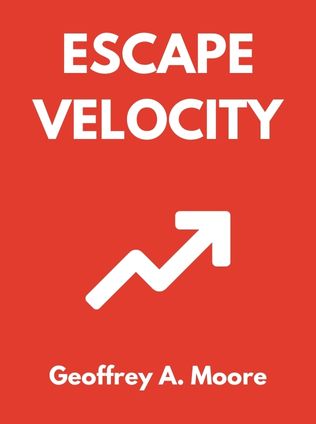
Escape Velocity
Free Your Company's Future from the Pull of the Past
By Geoffrey A. Moore
Published 10/2011
About the Author
Geoffrey A. Moore is a renowned high-tech strategist and the author of "Escape Velocity: Free Your Company's Future from the Pull of the Past." He is the chairman emeritus of The Chasm Group, Chasm Institute, and TCG Advisors, consulting firms that provide marketing strategy and organizational advice to leading high-technology companies. Moore is also a venture partner with Mohr Davidow Ventures, a venture capital firm focusing on various innovative sectors, including e-commerce, Internet, enterprise software, clean technology, and personalized healthcare. Over his career, Moore has developed groundbreaking strategies that have helped some of the world's most successful enterprises achieve sustained growth and navigate the complexities of the modern business landscape.
Main Idea
"Escape Velocity" offers a pragmatic approach for established enterprises to drive next-generation growth by overcoming the gravitational pull of past success. Moore's strategy revolves around leveraging a hierarchy of powers—category power, company power, market power, offer power, and execution power—to systematically migrate an enterprise's portfolio into higher-growth categories. By doing so, businesses can break free from their legacy constraints and create a sustainable foundation for long-term competitive advantage.
Table of Contents
- Introduction
- Escape Velocity and the Hierarchy of Powers
- Category Power: Reengineering Portfolio Management
- Company Power: Making Asymmetrical Bets
- Market Power: Capitalizing on Markets in Transition
- Offer Power: Breaking the Ties That Bind
- Execution Power: Engineering the Escape
- Conclusion
Introduction
The introduction sets the stage by highlighting the challenges established companies face in the modern globalized economy. Moore argues that globalization has created a new competitive landscape, necessitating a reevaluation of vision, strategy, and execution. He asserts that the "pull of the past"—the inertia of legacy business models and operating plans—prevents companies from allocating resources effectively to new initiatives. To achieve escape velocity, companies must develop strategies that accommodate both sustaining and disruptive market demands.
Escape Velocity and the Hierarchy of Powers
Moore introduces the concept of escape velocity as the force needed to overcome the gravitational pull of past success. He presents a framework called the Hierarchy of Powers, which includes five types of economic power:
- Category Power: The demand for a class of products or services relative to others.
- Company Power: The status and prospects of a specific vendor within a category.
- Market Power: The company's power within a single market segment.
- Offer Power: The demand for a specific product or service relative to its competitors.
- Execution Power: The ability to outperform competitors under neutral conditions.
Moore argues that aligning these powers can create a synergistic effect, enabling companies to achieve sustainable growth. Each power must be leveraged effectively to counteract the inertia of legacy commitments and redirect resources towards next-generation opportunities.
Category Power: Reengineering Portfolio Management
Category power is the most general form of economic power and a key predictor of future performance. Moore explains that companies must focus on managing their portfolios to shift resources from declining categories to emerging and growth categories. He introduces the Category Maturity Life Cycle, which includes five states:
Sign up for FREE and get access to 1,400+ books summaries.
You May Also Like
The Lean Startup
How Today's Entrepreneurs Use Continuous Innovation to Create Radically Successful Businesses
By Eric RiesWho Moved My Cheese?
An Amazing Way to Deal with Change in Your Work and in Your Life
By Spencer Johnson, M.D.Make Your Bed
Little Things That Can Change Your Life...And Maybe the World
By William H. McRavenThe Ride of a Lifetime
Lessons Learned from 15 Years as CEO of the Walt Disney Company
By Robert Iger



















